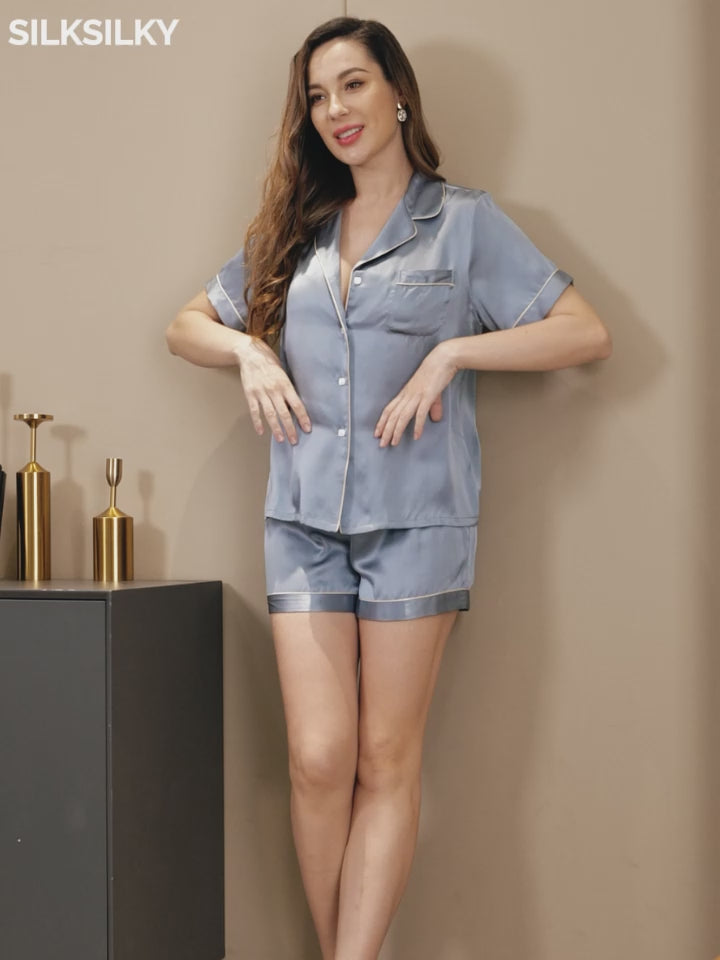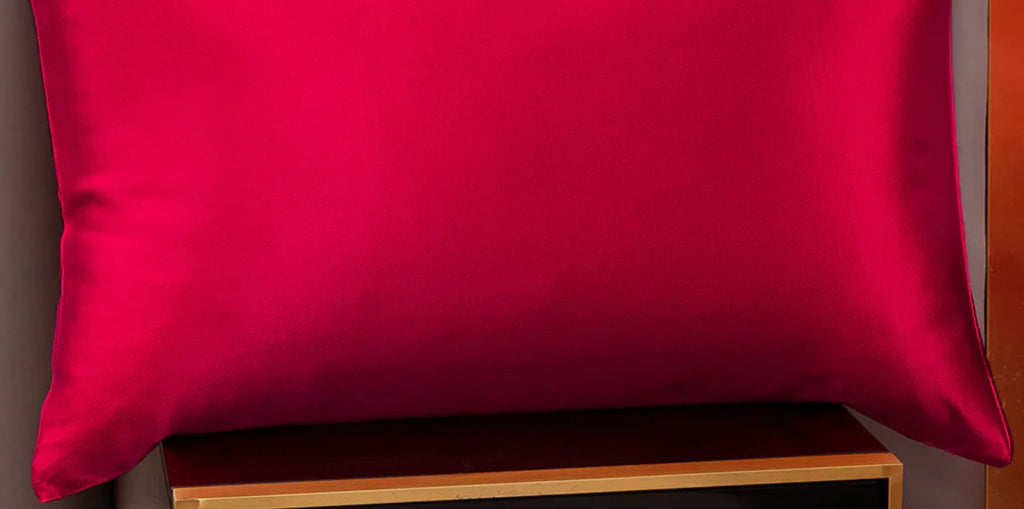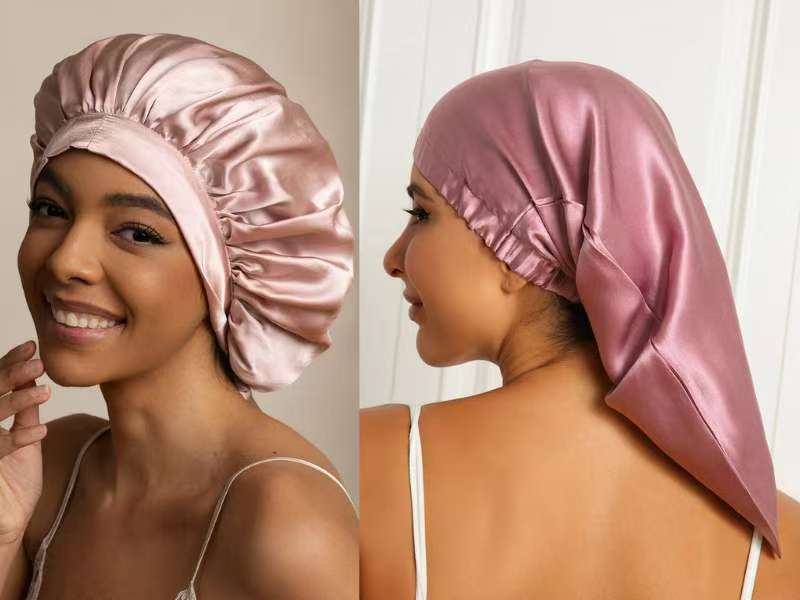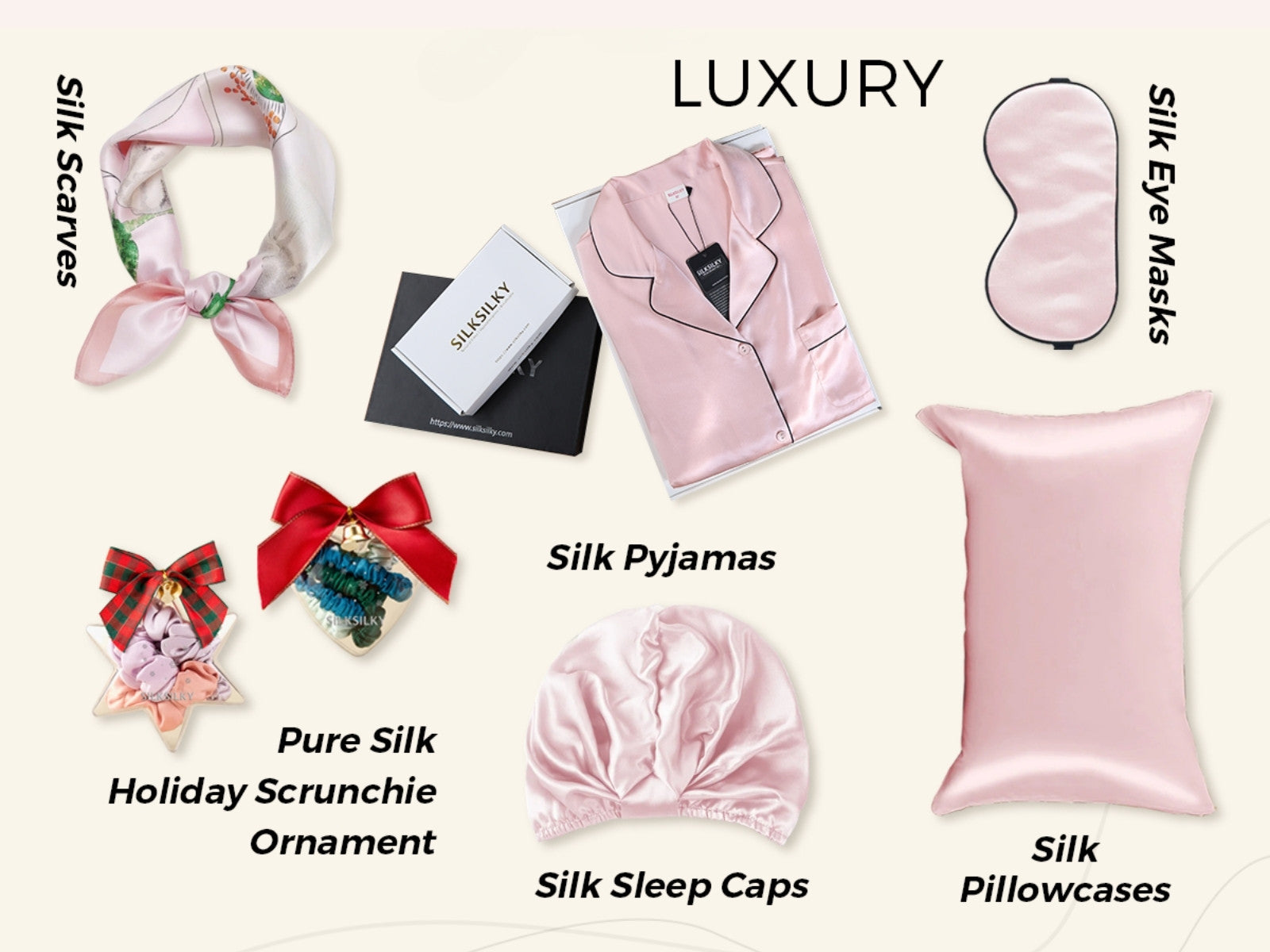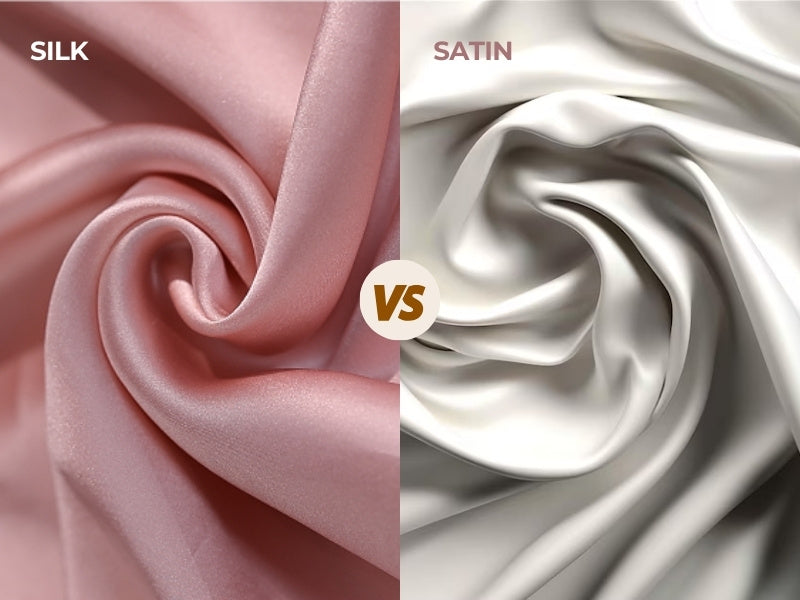Strong and Beautiful: 5 Effective Methods to Prevent Hair Breakage
Hair breakage can be a frustrating and discouraging problem, hindering your efforts to maintain healthy and lustrous locks. It's often a sign that your hair's protective outer layer, the cuticle, is damaged, making the inner cortex vulnerable. While various factors contribute to hair breakage, integrating specific, proven strategies into your hair care routine can significantly reduce damage and promote stronger, more resilient hair. One such effective strategy, widely recommended by hair experts, is sleeping on a silk pillowcase.
1. Nurture Hair Health with a Silk Pillowcase
Choosing a silk pillow slip to rest your head on can be a powerful tool for preventing hair breakage. Here's why dermatologists and hairstylists often recommend it:
- Reduced Friction: Unlike traditional cotton pillowcases, which have a coarser weave that can cause friction and snagging, the incredibly smooth and slippery surface of silk minimizes rubbing. Made from a natural protein fiber, silk's unique amino acid structure is similar to that of human hair, allowing strands to glide effortlessly, which significantly reduces tangles, knots, and the mechanical stress on your hair as you move in your sleep. This directly helps to prevent breakage.
- Maintains Moisture: Cotton is absorbent, meaning it can draw moisture from your hair throughout the night, leaving it drier and more prone to breakage. Silk, being less absorbent, helps your hair retain its natural oils and any applied leave-in treatments, keeping strands hydrated and more elastic.
Silk pillow shams allow your hair to glide effortlessly, creating a gentle and protective environment that promotes overall hair health and significantly reduces the likelihood of breakage.
Silk Pillowcase vs. Other Pillowcase Materials
To understand why silk is a superior choice, it helps to compare it with other common materials:
| Feature | Silk (Mulberry) | Cotton | Satin (Polyester) |
|---|---|---|---|
| Material | Natural protein fiber | Natural plant fiber | Synthetic fiber |
| Friction & Hair | Extremely low friction; hair glides easily, minimizing breakage and frizz. | High friction; can snag hair and cause tangles and breakage. | Low friction; but can generate static electricity, which can lead to frizz. |
| Moisture & Hydration | Less absorbent; helps hair and skin retain natural oils and moisture. | Highly absorbent; draws moisture out of hair, leaving it dry and brittle. | Not absorbent; but can trap heat and moisture, which is less ideal for hydration. |
2. Use Heat Styling Wisely
Excessive heat styling is a major culprit for hair breakage. High temperatures can damage the hair's protective cuticle and weaken its core protein structure (keratin), making your hair brittle and highly susceptible to breakage. To prevent this:
- Minimize Heat Exposure: Reduce how often you use heat styling tools and opt for heat-free styling options like braids or air-drying whenever possible. When you do style with heat, always apply a quality heat protectant spray beforehand and use the lowest effective heat setting.
3. Handle Wet Hair with Care
Wet hair is significantly more fragile and elastic than dry hair because water temporarily weakens the bonds within the hair structure. This makes it highly prone to stretching and snapping. To prevent breakage when wet:
- Gentle Drying: Avoid vigorous towel drying. Instead, gently squeeze out excess moisture with a soft cotton T-shirt or a specially designed microfiber hair turban.
- Detangle Thoughtfully: Use a wide-toothed comb or a brush specifically designed for wet hair. Always start detangling from the ends of your hair, gently working your way upwards to the roots.
- Use Detangling Aids: Apply a leave-in conditioner or detangling spray to damp hair to provide slip and make combing easier.
4. Protect Your Hair from Environmental Stressors
Everyday environmental factors can significantly weaken your hair over time, making it brittle and prone to breakage. These stressors include:
- Sun Exposure (UV Radiation): Wear a hat or scarf when spending extended time outdoors to protect your hair from UV damage.
- Wind: Strong winds can cause hair to tangle severely. Tying your hair up loosely can help.
- Pollution: Use a protective hair serum or oil containing antioxidants to create a barrier against airborne pollutants.
- Chlorine & Saltwater: Always wet your hair with fresh water and apply a leave-in conditioner before swimming. Rinse your hair thoroughly with fresh water immediately after swimming to remove any damaging residues.
5. Maintain a Balanced and Nutrient-Rich Diet
The strength and health of your hair literally start from within. A balanced and nutrient-rich diet plays a vital role in preventing hair breakage by providing the essential building blocks for strong strands. Ensure your meals include a variety of fruits, vegetables, whole grains, lean proteins, and healthy fats for optimal hair health.
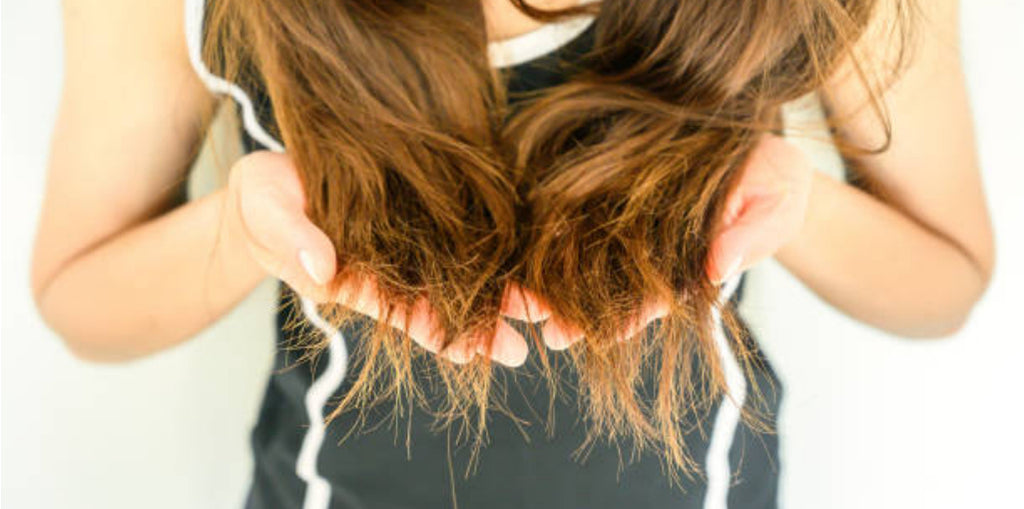
Embrace Stronger, More Beautiful Hair
Preventing hair breakage is an ongoing journey, but it's essential for maintaining strong, vibrant, and beautiful hair. By incorporating strategies such as choosing a silk pillowcase, being mindful of heat styling, handling wet hair with utmost care, protecting your hair from environmental stressors, and maintaining a nutrient-rich diet, you can significantly reduce the risk of breakage and nurture healthier, more resilient strands. Remember that consistency and patience are key when implementing these methods, as true hair health takes time and dedication to improve. Embrace these practices as fundamental parts of your hair care routine, and you'll be well on your way to enjoying stronger, more gorgeous hair that truly withstands the test of time. To begin your journey to healthier hair, consider making the switch to a silk pillowcase today.
![[Light Blue] SilkSilky Pure Silk Notch Collar Women's Pajamas 001,](http://silksilky.com/cdn/shop/files/ab83afb9301666ee2f174a8ae72ffda4_4e9bb488-7880-40fe-9e69-f0fd823857c5.jpg?v=1764653199&width=1200)
![[Light Blue] SilkSilky Pure Silk Notch Collar Women's Pajamas 002,](http://silksilky.com/cdn/shop/files/db8dbeee5354fe3b631b963715847ffe.jpg?v=1764653202&width=1200)
![[Dark Red] SilkSilky Pure Silk Notch Collar Women's Pajamas 001,](http://silksilky.com/cdn/shop/files/599ed0811e1a5fcfa55bdc80a0279704_2643c850-a793-4475-a52b-7fef1bbd7e36.jpg?v=1762233837&width=1200)
![[Dark Red] SilkSilky Pure Silk Notch Collar Women's Pajamas 002,](http://silksilky.com/cdn/shop/files/9e022d4dd4f99aed4af8da3f58fcfd5b_efb9bafe-3d71-4283-9b81-e339ff08f352.jpg?v=1762233837&width=1200)
![[White] SilkSilky Pure Silk V Neck Nightgown 001,](http://silksilky.com/cdn/shop/files/a8ae95260a57844b1e2e00c4fcfabdcc_b922b270-af10-4e96-9493-0d877bd663db.jpg?v=1764140639&width=1200)
![[White] SilkSilky Pure Silk V Neck Nightgown 002,](http://silksilky.com/cdn/shop/files/24ac506750f8c38c51bb5b6d0ee15287.jpg?v=1764140639&width=1200)
![[Pink] SilkSilky Pure Silk Sleep Cap 001,](http://silksilky.com/cdn/shop/files/SilkSilky_Pure_Silk_Sleep_Cap_Pink_001_C-250529006.jpg?v=1762221980&width=1200)
![[Pink] SilkSilky Pure Silk Sleep Cap 002,](http://silksilky.com/cdn/shop/files/SilkSilky_Pure_Silk_Sleep_Cap_Pink_002_C-250529006.jpg?v=1762221980&width=1200)
![[Steel Blue] SilkSilky Pure Silk Notch Collar Women's Pajamas 001,](http://silksilky.com/cdn/shop/files/05b358f92fb5d252122b00d69a2fcfc5_88211a42-88c4-4448-8cb3-5f18529bfef8.jpg?v=1762237226&width=1200)
